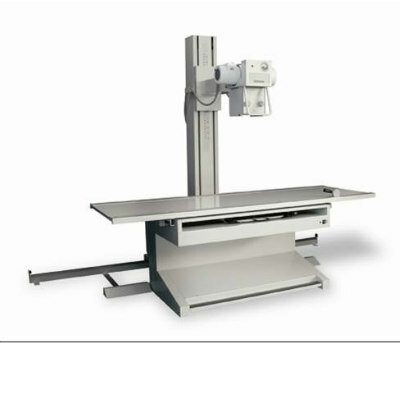New Ultrasound Scanner App Automatically Detects Body Anatomy 
|
By MedImaging International staff writers Posted on 02 Jun 2021 |

Image: Clarius high-definition ultrasound scanners now enable clinicians to quickly examine the abdomen, heart, lungs, bladder, and other superficial structures (Photo courtesy of Clarius Mobile Health)
An advanced ultrasound scanner software app uses artificial intelligence (AI) and machine learning (ML) to instantly recognize human anatomy.
The app, designed for the Clarius Mobile Health (Clarius; Burnaby, Canada) Clarius C3 HD multipurpose and Clarius PA HD phased array ultrasound systems, is ideally suited for emergency medical service (EMS), critical care, and primary care users, enabling them to quickly and accurately examine the abdomen, heart, lungs, bladder, and other important structures without needing time-consuming interaction. Users simply need to select Auto Preset AI and the Clarius app will automatically adjust settings to optimize imaging for the area being examined.
In addition to Auto Preset AI, version 8.0 of the Clarius ultrasound app includes dozens of new features and enhancements, such as the ability to capture and document photographs taken with the mobile device camera (alongside the ultrasound images), providing context for education, reporting, and patient information. Users can also share interesting cases more easily to their social networks for commentary, as all images and clips remain anonymous to protect patient identity. Sharing also allows users to take advantage of native mobile device Integrations, such as Apple's AirDrop.
“Although machine learning and artificial intelligence have been applied to medical imaging over the past several years, this is the first commercially available application that enables an ultrasound system to recognize anatomy on a macro level, allowing the AI to recognize different structures in the human torso,” said Kris Dickie, vice president of research and development at Clarius. “We've labelled tens of thousands of ultrasound images within our vast database to achieve this exciting breakthrough, which will help clinicians to get the answers they need more rapidly.”
“Ultrasound is an amazing tool that gives those of us who know how to use it an instant window into the patient's body,” said Oron Frenkel, MD, chairman of the Clarius medical advisory board. “Besides Auto Preset AI, which will set up novice users for success from day one, we now have nearly 100 ultrasound tutorials that can be viewed in-app. Through this integration, users can easily toggle between watching the video and scanning their patient. Clarius Classroom provides an excellent way to learn.”
Clinicians are free to choose from ten wireless ultrasound scanners that are operated by the Clarius Ultrasound app, which can be downloaded from the Apple App Store or Google Play store for free. The app is compatible with most iOS and Android smart devices for high-definition (HD) imaging.
Related Links:
Clarius Mobile Health
The app, designed for the Clarius Mobile Health (Clarius; Burnaby, Canada) Clarius C3 HD multipurpose and Clarius PA HD phased array ultrasound systems, is ideally suited for emergency medical service (EMS), critical care, and primary care users, enabling them to quickly and accurately examine the abdomen, heart, lungs, bladder, and other important structures without needing time-consuming interaction. Users simply need to select Auto Preset AI and the Clarius app will automatically adjust settings to optimize imaging for the area being examined.
In addition to Auto Preset AI, version 8.0 of the Clarius ultrasound app includes dozens of new features and enhancements, such as the ability to capture and document photographs taken with the mobile device camera (alongside the ultrasound images), providing context for education, reporting, and patient information. Users can also share interesting cases more easily to their social networks for commentary, as all images and clips remain anonymous to protect patient identity. Sharing also allows users to take advantage of native mobile device Integrations, such as Apple's AirDrop.
“Although machine learning and artificial intelligence have been applied to medical imaging over the past several years, this is the first commercially available application that enables an ultrasound system to recognize anatomy on a macro level, allowing the AI to recognize different structures in the human torso,” said Kris Dickie, vice president of research and development at Clarius. “We've labelled tens of thousands of ultrasound images within our vast database to achieve this exciting breakthrough, which will help clinicians to get the answers they need more rapidly.”
“Ultrasound is an amazing tool that gives those of us who know how to use it an instant window into the patient's body,” said Oron Frenkel, MD, chairman of the Clarius medical advisory board. “Besides Auto Preset AI, which will set up novice users for success from day one, we now have nearly 100 ultrasound tutorials that can be viewed in-app. Through this integration, users can easily toggle between watching the video and scanning their patient. Clarius Classroom provides an excellent way to learn.”
Clinicians are free to choose from ten wireless ultrasound scanners that are operated by the Clarius Ultrasound app, which can be downloaded from the Apple App Store or Google Play store for free. The app is compatible with most iOS and Android smart devices for high-definition (HD) imaging.
Related Links:
Clarius Mobile Health
Latest Ultrasound News
- Deep Learning Advances Super-Resolution Ultrasound Imaging
- Novel Ultrasound-Launched Targeted Nanoparticle Eliminates Biofilm and Bacterial Infection
- AI-Guided Ultrasound System Enables Rapid Assessments of DVT
- Focused Ultrasound Technique Gets Quality Assurance Protocol
- AI-Guided Handheld Ultrasound System Helps Capture Diagnostic-Quality Cardiac Images
- Non-Invasive Ultrasound Imaging Device Diagnoses Risk of Chronic Kidney Disease
- Wearable Ultrasound Platform Paves Way for 24/7 Blood Pressure Monitoring On the Wrist
- Diagnostic Ultrasound Enhancing Agent to Improve Image Quality in Pediatric Heart Patients
- AI Detects COVID-19 in Lung Ultrasound Images
- New Ultrasound Technology to Revolutionize Respiratory Disease Diagnoses
- Dynamic Contrast-Enhanced Ultrasound Highly Useful For Interventions
- Ultrasensitive Broadband Transparent Ultrasound Transducer Enhances Medical Diagnosis
- Artificial Intelligence Detects Heart Defects in Newborns from Ultrasound Images
- Ultrasound Imaging Technology Allows Doctors to Watch Spinal Cord Activity during Surgery

- Shape-Shifting Ultrasound Stickers Detect Post-Surgical Complications
- Non-Invasive Ultrasound Technique Helps Identify Life-Changing Complications after Neck Surgery
Channels
Radiography
view channel
Novel Breast Imaging System Proves As Effective As Mammography
Breast cancer remains the most frequently diagnosed cancer among women. It is projected that one in eight women will be diagnosed with breast cancer during her lifetime, and one in 42 women who turn 50... Read more
AI Assistance Improves Breast-Cancer Screening by Reducing False Positives
Radiologists typically detect one case of cancer for every 200 mammograms reviewed. However, these evaluations often result in false positives, leading to unnecessary patient recalls for additional testing,... Read moreMRI
view channel
PET/MRI Improves Diagnostic Accuracy for Prostate Cancer Patients
The Prostate Imaging Reporting and Data System (PI-RADS) is a five-point scale to assess potential prostate cancer in MR images. PI-RADS category 3 which offers an unclear suggestion of clinically significant... Read more
Next Generation MR-Guided Focused Ultrasound Ushers In Future of Incisionless Neurosurgery
Essential tremor, often called familial, idiopathic, or benign tremor, leads to uncontrollable shaking that significantly affects a person’s life. When traditional medications do not alleviate symptoms,... Read more
Two-Part MRI Scan Detects Prostate Cancer More Quickly without Compromising Diagnostic Quality
Prostate cancer ranks as the most prevalent cancer among men. Over the last decade, the introduction of MRI scans has significantly transformed the diagnosis process, marking the most substantial advancement... Read moreNuclear Medicine
view channel
New SPECT/CT Technique Could Change Imaging Practices and Increase Patient Access
The development of lead-212 (212Pb)-PSMA–based targeted alpha therapy (TAT) is garnering significant interest in treating patients with metastatic castration-resistant prostate cancer. The imaging of 212Pb,... Read moreNew Radiotheranostic System Detects and Treats Ovarian Cancer Noninvasively
Ovarian cancer is the most lethal gynecological cancer, with less than a 30% five-year survival rate for those diagnosed in late stages. Despite surgery and platinum-based chemotherapy being the standard... Read more
AI System Automatically and Reliably Detects Cardiac Amyloidosis Using Scintigraphy Imaging
Cardiac amyloidosis, a condition characterized by the buildup of abnormal protein deposits (amyloids) in the heart muscle, severely affects heart function and can lead to heart failure or death without... Read moreGeneral/Advanced Imaging
view channel
New AI Method Captures Uncertainty in Medical Images
In the field of biomedicine, segmentation is the process of annotating pixels from an important structure in medical images, such as organs or cells. Artificial Intelligence (AI) models are utilized to... Read more.jpg)
CT Coronary Angiography Reduces Need for Invasive Tests to Diagnose Coronary Artery Disease
Coronary artery disease (CAD), one of the leading causes of death worldwide, involves the narrowing of coronary arteries due to atherosclerosis, resulting in insufficient blood flow to the heart muscle.... Read more
Novel Blood Test Could Reduce Need for PET Imaging of Patients with Alzheimer’s
Alzheimer's disease (AD), a condition marked by cognitive decline and the presence of beta-amyloid (Aβ) plaques and neurofibrillary tangles in the brain, poses diagnostic challenges. Amyloid positron emission... Read more.jpg)
CT-Based Deep Learning Algorithm Accurately Differentiates Benign From Malignant Vertebral Fractures
The rise in the aging population is expected to result in a corresponding increase in the prevalence of vertebral fractures which can cause back pain or neurologic compromise, leading to impaired function... Read moreImaging IT
view channel
New Google Cloud Medical Imaging Suite Makes Imaging Healthcare Data More Accessible
Medical imaging is a critical tool used to diagnose patients, and there are billions of medical images scanned globally each year. Imaging data accounts for about 90% of all healthcare data1 and, until... Read more
Global AI in Medical Diagnostics Market to Be Driven by Demand for Image Recognition in Radiology
The global artificial intelligence (AI) in medical diagnostics market is expanding with early disease detection being one of its key applications and image recognition becoming a compelling consumer proposition... Read moreIndustry News
view channel
Bayer and Google Partner on New AI Product for Radiologists
Medical imaging data comprises around 90% of all healthcare data, and it is a highly complex and rich clinical data modality and serves as a vital tool for diagnosing patients. Each year, billions of medical... Read more


















